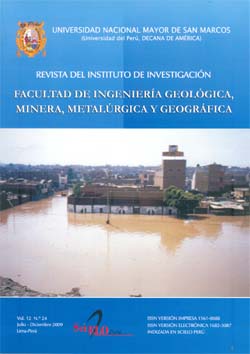Determination of the risk condition for the drilling cuttings re-injection process into depleted wells in two offshore platforms at the southwest of the Campeche Sonda
DOI:
https://doi.org/10.15381/iigeo.v12i24.369Keywords:
Risk analysis, waste disposal, re-injection of cuttingsAbstract
Potential risks associated with the cuttings re-injection process as an alternative method for drilling wastes disposal were identi- fied and assessed in two offshore platforms located at the southwest of the Campeche Sonda in Mexico. Risks were evaluated using the HAZOP methodology, to identifying hazards in 11 nodes. In addition, deviations in the process were analyzed, and each risk analyzed was categorized as tolerable or non-tolerable and providing some recommendations. Consequences derived from accidental spills of slurry and/or cuttings were analyzed using the mathematical model YAXUM 3D to simulate the pollu- tants dispersion in seawater in three different climatic periods. The results of the consequences analysis shows that even the concentrations in the discharge point exceeded the recommended criteria for protection of the marine life and seawater quality, the spill is rapidly dispersed complying with permitted levels in 8 hr as a maximum.Downloads
Published
Issue
Section
License
Copyright (c) 2009 M. Muriel García, L. Benavides, H. Ramírez León, J. G. Cerón Bretón, R. M. Cerón Bretón, A. V. Córdova Quiroz, R. A. Jiménez Corzo

This work is licensed under a Creative Commons Attribution-NonCommercial-ShareAlike 4.0 International License.
AUTHORS RETAIN THEIR RIGHTS:
a. Authors retain their trade mark rights and patent, and also on any process or procedure described in the article.
b. Authors retain their right to share, copy, distribute, perform and publicly communicate their article (eg, to place their article in an institutional repository or publish it in a book), with an acknowledgment of its initial publication in the Rev. Inst. investig. Fac. minas metal cienc. geogr.
c. Authors retain theirs right to make a subsequent publication of their work, to use the article or any part thereof (eg a compilation of his papers, lecture notes, thesis, or a book), always indicating the source of publication (the originator of the work, journal, volume, number and date).






